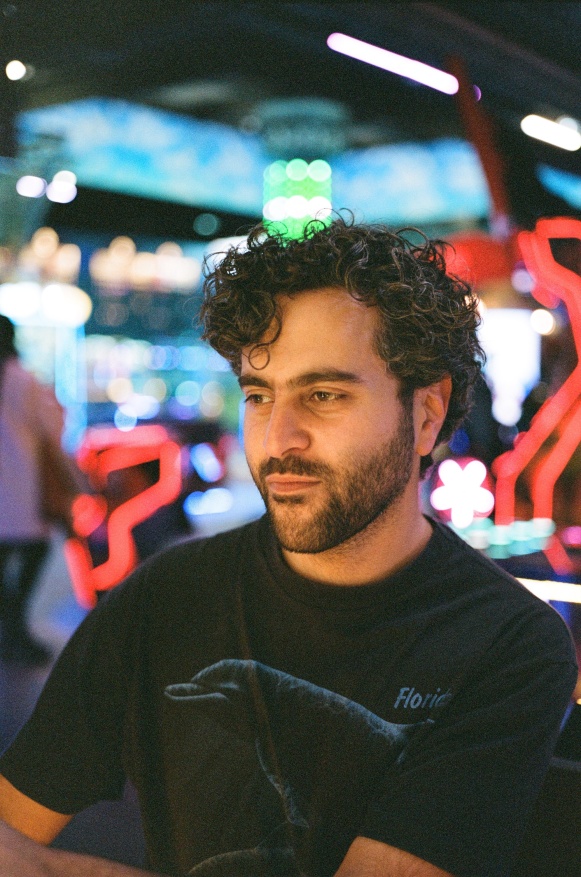Arash Nassiri
Visual Artist

- Visual Arts
- Los Angeles
Born in Tehran in 1986, I spent my childhood in the Geneva suburb of Cité du Lignon. A post-war social housing project, this complex of buildings on the banks of the Rhône is home to thousands of residents of around one hundred nationalities. It was in this universalist utopia that my earliest memories are rooted. My many trips back and forth to Tehran forged a counterpoint to this experience and questioned my sense of belonging to these places. It is in the gap between these two territories that my work is situated.
Since 2014, I have begun a series of works that question this gap and put into perspective what Tehran’s legacy has become. Taking codes from Hollywood cinema, TV series and music videos, I reuse these popular formats to make them convey new narratives, represent memory and speculate on the future of the Iranian capital. The latter is particularly dear to me, both for what it means to me personally and for what its bankruptcy has left behind.
Through these pieces, I bring into play the negotiation of a heritage: how it defines us, but also how to escape it.
Arash Nassiri (born in 1986 in Tehran, Iran; lives and works in Berlin) is a laureate of the Berlin Program for Artists. In 2024, he will take up a residency in Los Angeles with the Villa Albertine. His work has been exhibited at CAPC Bordeaux in 2023, Metabolic Rift in 2021, Palais de Tokyo and Flax Los Angeles in 2018. His video works have been screened at the New Directors MOMA, the Berlin Biennale, ICA London and CPH DOX. He is a graduate of the École nationale supérieure des Arts Décoratifs in Paris and Le Fresnoy, Studio National des Arts Contemporains.
For the Villa Albertine residency, I’m interested in Beverly Hills’ Persian Palaces, an architectural style invented in the 80s and 90s and then banned by the city in 2004.
In Los Angeles, the Iranian diaspora, having achieved the American dream, wanted, through the same project, to mark their belonging while integrating their Iranian heritage in a series of resembling American mansions while incorporating Iranian ornamentation. This architectural synthesis gave rise to much debate, culminating in the 2004 the ban on their construction.
During this residency, I’d like to meet the architect Hamid Omrani, the owners of these houses and the surrounding neighborhood, in order to understand the desires and feelings underlying this architecture, which I believe are the true foundations of these houses.
Since the second half of the 20th century, Los Angeles has been a model of urban planning for the city of Tehran. Over the years, it has become a welcoming city for the Iranian diaspora.
The construction of the Persian Palaces was an architectural micro-movement that developed on several streets of Beverly Hills. This residency in Los Angeles is therefore an opportunity for me to document not only these buildings, but also the protagonists of these projects: their architects, residents and neighbors.
More broadly, the aim is to place this phenomenon in a wider perspective of late 20th-century urban planning in Beverly Hills. I’m thinking in particular of the Hearst Castle, built between 1919 and 1947.